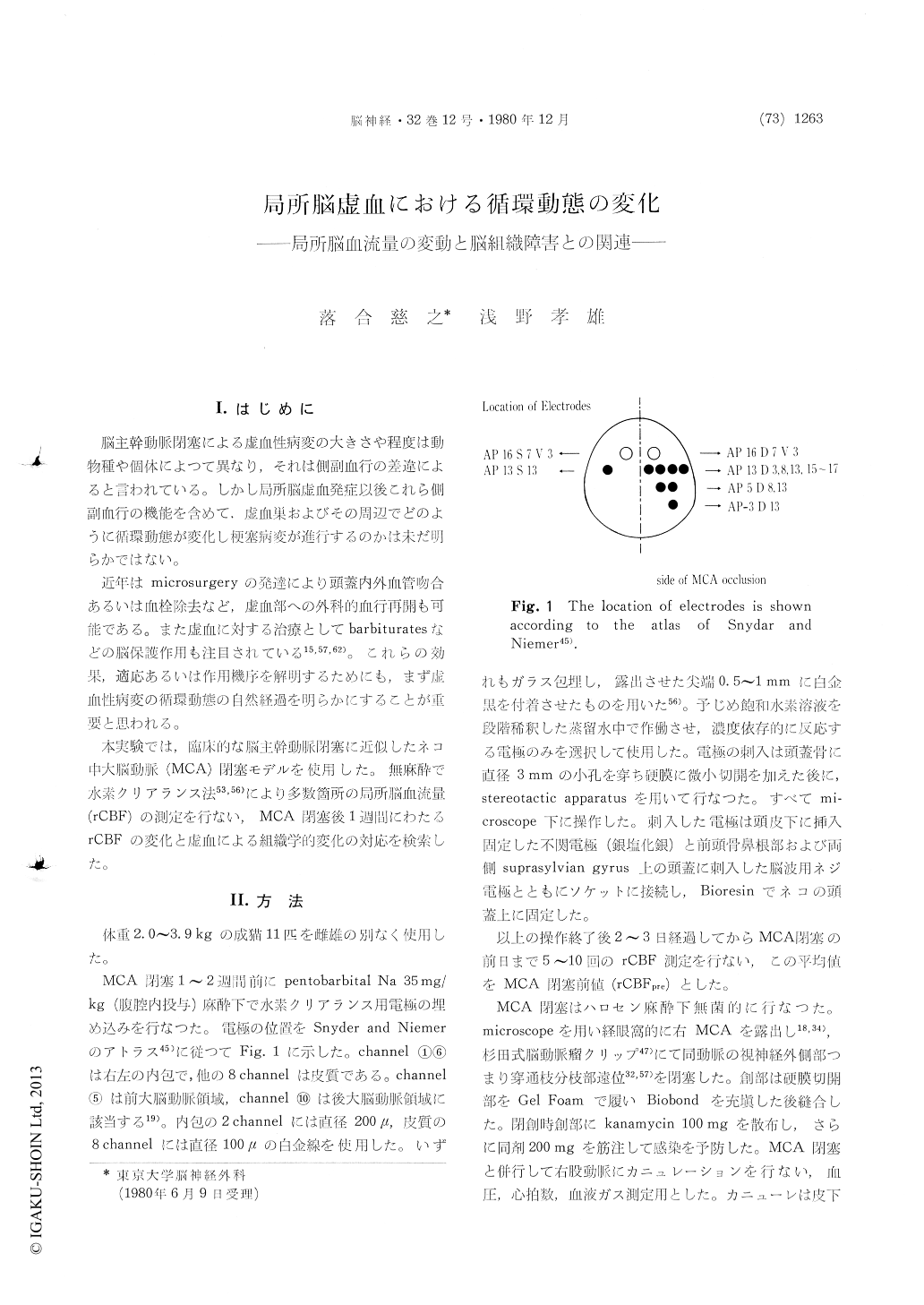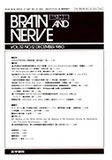Japanese
English
- 有料閲覧
- Abstract 文献概要
- 1ページ目 Look Inside
I.はじめに
脳主幹動脈閉塞による虚血性病変の大きさや程度は動物種や個体によつて異なり,それは側副血行の差違によると言われている。しかし局所脳虚血発症以後これら側副血行の機能を含めて.虚血巣およびその周辺でどのように循環動態が変化し梗塞病変が進行するのかは未だ明らかではない。
近年はmicrosurgeryの発達により頭蓋内外血管吻合あるいは血栓除去など,虚血部への外科的血行再開も可能である。また虚血に対する治療としてbarbituratesなどの脳保護作用も注目されている15,57,62)。これらの効果,適応あるいは作用機序を解明するためにも,まず虚血性病変の循環動態の自然経過を明らかにすることが重要と思われる。
It is well known that the severity and extent of cerebral infarction ensuing from proximal artery occlusion is quite variable even in the same species. Because of a paucity of studies with serial measure-ment of rCBF, however, the exact mode of changes in rCBFs in and arround the ischemic area follow-ing the onset of an ischemic insult has not been satisfactory disclosed. To clarify the relationship between the change in rCBFs and subsequent evolu-tion of pathological changes in regional cerebral ischemia, a long-term follow up of rCBF and the evaluation of histological outcome were carried out in the present study.
Ten glass-coated platinum electrodes with bared tips were inplanted in the fixed positions of the cerebral cortex and the internal capsule in each of 11 cats. Serial measurements of rCBF were carried out for several days to obtain stable control rCBF values. Then permanent occlusion of the MCA by transorbital approach was carried out under halo-thane anesthesia. Halothane inhalation was stopped immediately after clipping and 15-20min later, the first postischemic rCBF values were obtained. R-CBF measurement was, thereafter, repeated with fixed time-intervals for 144 hours. Every measure-ment of rCBF was done by hydrogen clearance method in the awake condition under mild restraint of animals as necessitated. In the seven cats which survived the whole observation period, perfusion-fixation of the brain with Karnovsky solution was performed.
Almost all electrodes invariablly showed reduc-tion of rCBF following MCA occlusion. Although the degree of reduction of rCBF in each electrode was variable according to the individual animal or location of the electrode, the initially dropped rCBF following MCA occlusion showed little or no in-crease during the observation period. There wereonly little fluctuations in the rCBF values of each electrode in the postischemic period. Histological study of the cortical regions topographically cor-responding to each electrode revealed that the areas where rCBF was reduced to less than 15ml/100mg/min became always infarcted.
The severity of ischemic insult by MCA occlusion in each cats was assessed by calculating the mean of the first postischemic rCBF values of electrodes in the affected hemisphere. The extent of infarc-tion was expressed as the infarction ratio of the damaged areas of both hemispheres in the coronal planes. Between the infarction ratio and the se-verity of the initial ischemic insult thus calculated, a highly significant linear relationship was revealed.
There were no electrodes which showed hype-remia, i.e., increase of rCBF above the control value, after MCA occlusion. In the animals which died during 20-77 hours following MCA occlusion, however, a moderate increase of rCBF not exceed-ing the control value was seen during two to eight hours in the peripheral zone of the ischemic area. Those animals exhibited pronounced brain edema which seemed to be the direct cause of death.
The result of the present study indicates that rearrangement of rCBF as would exert a significant influence on the subsequent evolution of ischemic brain damage does not take place once the initial reduction of rCBF is established. Eventual increase in rCBF in the early stage of ischemia, either spontaneous or artificial, might be associated with aggravation of brain damage because of the de-velopment of overt cerebral edema.

Copyright © 1980, Igaku-Shoin Ltd. All rights reserved.


